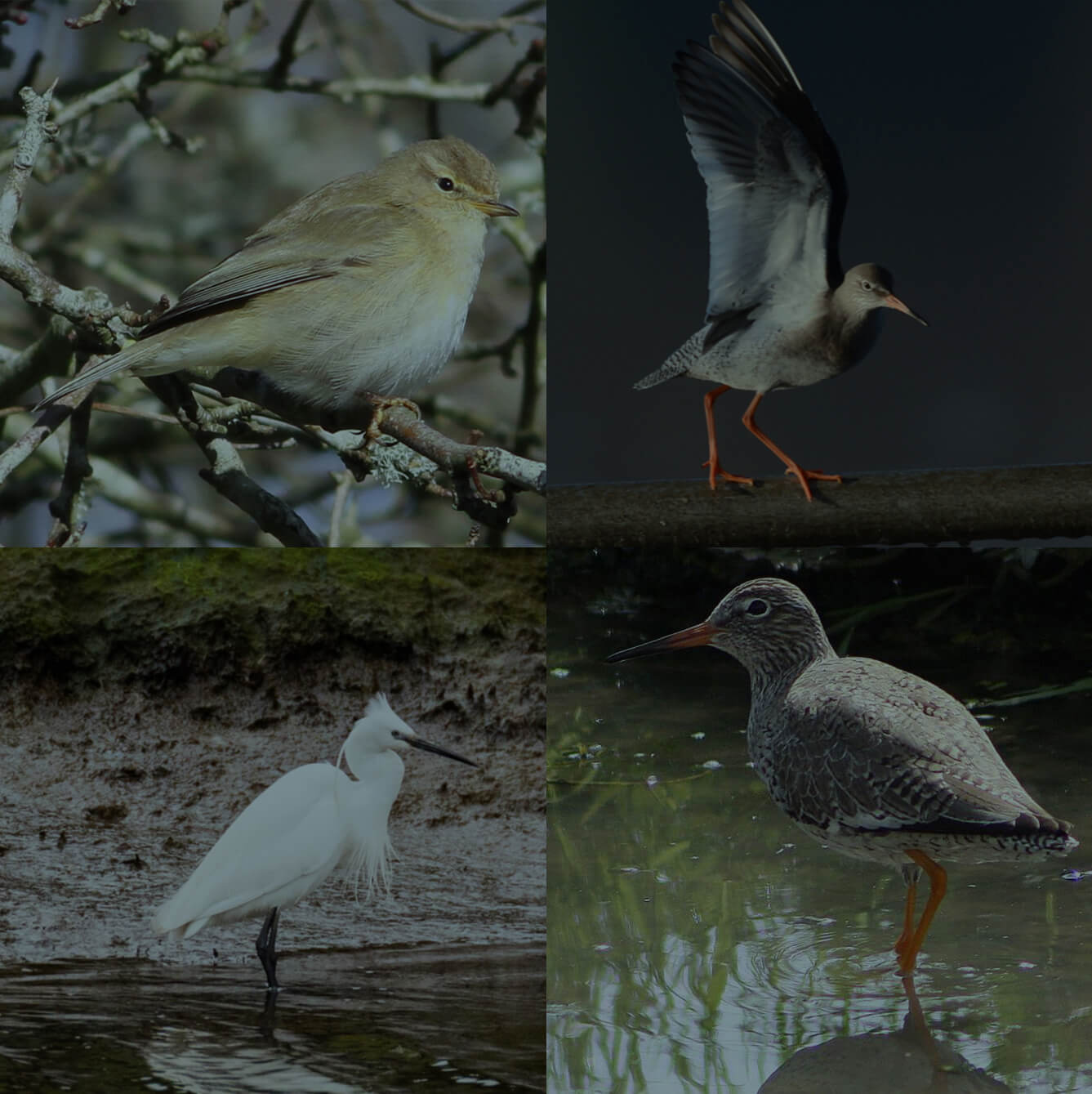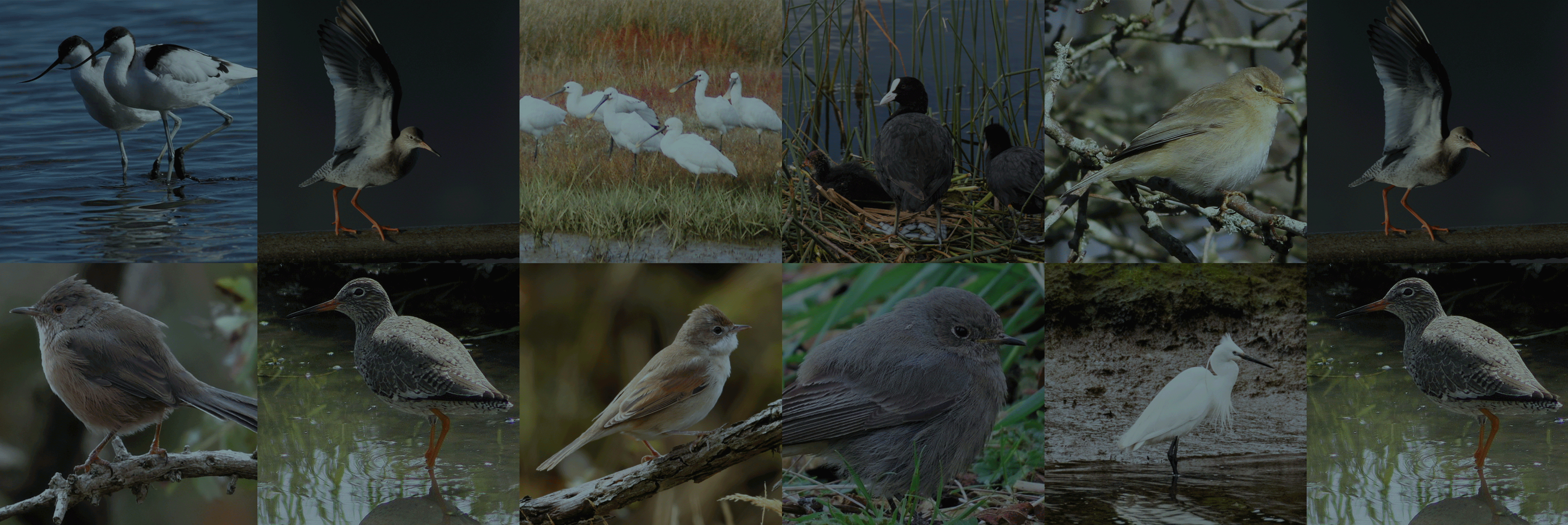An official account of all species that have been recorded and reported by birdwatchers and naturalists in the Poole Harbour area since records began.
The data for this list has been extracted from various sources, but George Greens 'The Birds of Dorset', Mansel-Pleydell's Birds of Dorsetshire, Naylor’s reference manual of rare birds and the back catalogue of Dorset bird reports have provided most information. Data is currently still being researched and records will be updated accordingly.
You can view this information in two different ways. Our alphabetical list provides information on the status of each species within the harbour, finder dates and names, photos and favoured locations. By clicking on the Systematic List button you will be presented the full Poole Harbour systematic list which includes status of species, pending records and historical accounts.
To date, 333 species have occurred and have been accepted within the Birds of Poole Harbour boundaries. A further 11 distinct subspecies have also been seen. In addition, we have two species/subspecies which have been recorded, but are awaiting acceptance by the appropriate records panel.
There are a handful of historical records, for which there is currently insufficient information to allow their inclusion onto the Poole Harbour list, but are believed to be genuine records. They are listed at the end of the list.
Finally, there are a number of feral or escaped species that have been recorded within the Birds of Poole Harbour boundaries. They are included for completeness, but are not included on the Poole Harbour list.
We would be interested in hearing details of any species that do not appeared on this list.
The Birds of Poole Harbour systematic list is a PDF which you can view by clicking on the button below. It was last updated on December 2019.
Full Poole Harbour Systematic List
Green Sandpiper
Latin Name
Tringa ochropus
Status
Passage Migrant & Winter Visitor
Site And Records Information
Green Sandpiper turns up from late June onwards at favourite sites such as Sunnyside Farm, Lytchett Fields, Bestwall, Swineham, in fact anywhere with lush wet fields and muddy pools. Peak migration occurs during July and Aug. Thanks to habitat changes at Lytchett Fields numbers have increased in recent years. A maximum count of c30 in Aug 2018 was a new record for the harbour at a single site. For as long as records have been kept a small number of individuals have wintered at the same sites and the odd bird can be found in any month of the year. As with Greenshank birds can be heard leaving the harbour shortly after dark over Hartland Moor. Spring migration is weaker but it can still be significant. 11 at Wareham Water-meadows on 5th May 2000 was record spring count for the County.
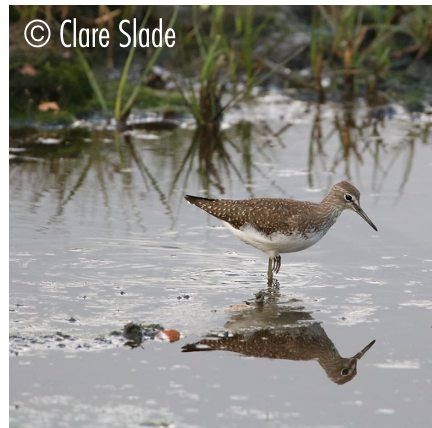
Green Woodpecker
Latin Name
Picus viridis
Status
Resident
Site And Records Information
The Green Woodpeckers laughing yaffle can be heard in any rural area around the harbour. Arne, Upton House, Slepe Heath, Lytchett Bay, Sandford Forest, Middlebere, Holton Lee and Studland all hold reasonable numbers.
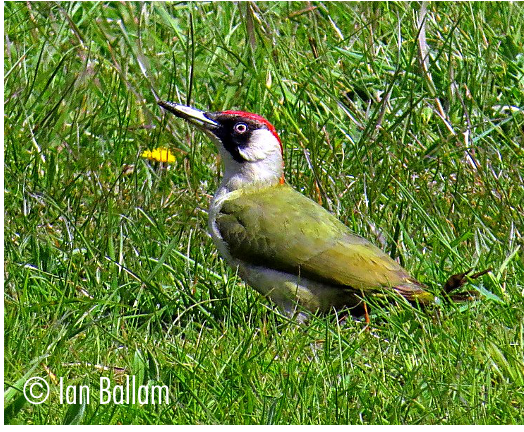
Green-winged Teal
Latin Name
Anas carolinensis
Status
Vagrant
Site And Records Information
Over two thirds of the County records are from Poole Harbour, with the first for the harbour being discovered on 21st December 1980 on Brownsea. It’s a vagrant to the harbour with 15 accepted records up to the end of 2014 involving at least 8 individuals. 12 of the records have fallen in the first 4 months of the year, the best time of year to find this species. As yet understandably there are no records of female birds.
1 from 22nd – 29th Jan 1983 at Little Sea, Studland (G Dutson, P.V. Harvey, J.A. Lucas)
1 on 2nd Feb 1985 – 4th Mar at Brands Bay (M.J.Massey et al). Also seen in Newton Bay.
1 on 14th Feb 1985 at Holes Bay (D.R.Collins) (same as above)
1 on 20th Nov 1985 at Brands Bay (per M. Cade) (presumed returning individual as above)
1 from 16th to 28th Apr 1989 at Middlebere (P.M.Troake)
1 on 12th Feb – 5th Mar 2000 in Holes Bay (I.M.Stanley et al)
1 from 14th – 17th Apr 2000 at Lytchett Bay (S.Robson et al) (presumed same as above)
1 from 2nd Feb – 3rd Mar 2001 at Holes Bay ( I.M.Stanley et al) (presumed returning individual as above)
1 on 23rd Dec 2001 and 1st Jan 2002 at Holes Bay (N.P.Hopper et al) (presumed returning individual as above)
1 on 10th Mar 2002 at Brands Bay (N.P.Hopper) (presumed same as above)
1 on 3rd – 15th Mar 2005 at Holes Bay (many observers)
1 from 1st – 2nd Feb 2007 at Holes Bay ( I.Prophet, H.G.WoodHomer)
1 from 7th – 12th Feb 2013 at Upton CP (N.P.Hopper et al)
1 from 1st – 3rd Mar 2013 at Middlebere (W.Clayton et al) (presumed same as above)
1 on 31st Dec 2014 at Brands Bay, Studland (S.W.Smith et al)
1 on 5th Dec 2016 at Lytchett Fields present throughout Dec 2016 (I.Ballam et al)
1 on Dec 2016 was present until 15th Jan 2017 at Lytchett Fields RSPB. It was back briefly on 4th & 5th Feb and returned on 28th Feb, remaining until 8th Apr by which time it had paired with a, presumed, female Eurasian Teal.
1 on 4th – 18th April 2022 at Lytchett Fields (I.Ballam)
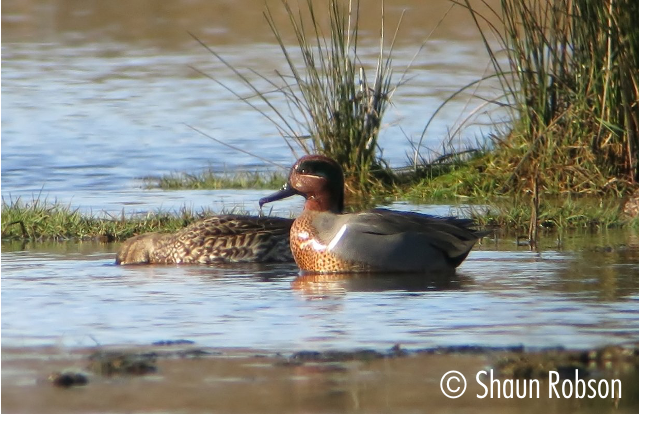
Greenfinch
Latin Name
Carduelis chloris
Status
Resident
Site And Records Information
Possible slight decline due to the trichomonosis disease, but evident right across the harbour as a breeding bird. Winter flocks do occur but passage is much more evident in October and November. Over Ballard, Glebelands and South Haven Greenfinch can pass over on migration in good numbers during October, although numbers have fallen. Easily located in spring with their melodic and tuneful song.
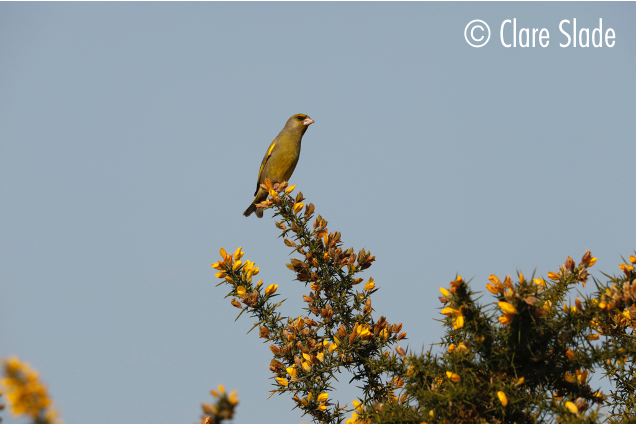
Greenland Wheatear
Latin Name
Oenanthe oenanthe leucorhoa
Status
Scarce Passage Migrant
Greenshank
Latin Name
Tringa nebularia
Status
Passage Migrant & Winter Visitor
Site And Records Information
It’s actually possible for Greenshank to be present in Poole Harbour every month of the year, with August – October seeing peak passage. Brownsea, Lytchett Fields and Middlebere being key sites. Infrequent before the fifties, the two quietest months are May and June. For example Brownsea had one bird in June 2002 building to 15 in August peaking at 33 (mainly juveniles) in October and dropping again to 5 in December. Their easily recognisable ‘tew tew tew’ call is regular call they give on night migration.
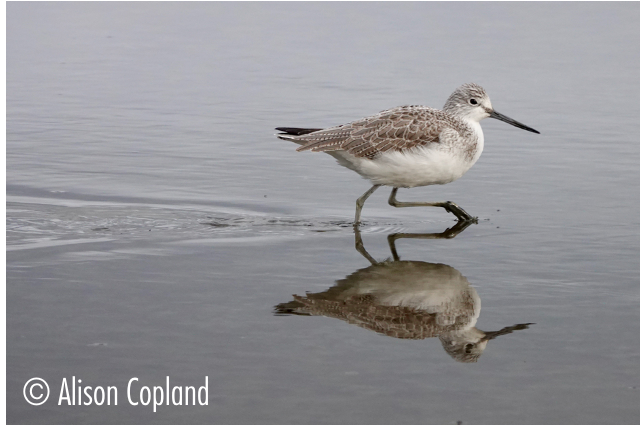
Grey Heron
Latin Name
Ardea cinerea
Status
Resident
Site And Records Information
Brownsea had the largest heronry in Dorset. It was thought to have become established in the early 1800’s but was deserted when all the trees were felled at the height of Brownsea’s habitation. The birds moved to Arne then returned again when war training started there.
By then it was under Mrs Christies ownership although the island had became overgrown and had even been set alight in July 1934 by one of the evicted villagers meaning suitable nest sites must have returned.
Because Mrs Christie wouldn’t let anyone on not even to count birds in the 1961 Bird Report A.J.Bull wrote, “When last enumerated in 1955 the Brownsea Island heronry held 32 nests. Though a systematic count was not possible Angela Hughes flew over the island on July 7th and was able to see about 30-40 white-washed nests.
The birds peaked at a maximum of 131 pairs in 1971 “ and it was the second largest heronry in Britain and one of the largest in Europe” said Tony Wise, ex-Brownsea Warden. It dropped to 62 pairs by 1997 and down further to 44 pairs in 1999. . By 2002 with just 33 nests they were outnumbered by Little Egret nests and there were just 31 pairs in 2004.
The Arne Heath colony was abandoned in the 1940’s after war training started there, with the remaining birds joining the colony at Brownsea. In 1957 the Brownsea colony was estimated at 48 nests. By 1967 this had risen to 90 pairs and by 1971 stood at 131 pairs. Sadly, it was all downhill after that, with the colony then steadily shrinking year on year. In 2010 only seven pairs were left. The following year none!
Here’s an extract from the most recent report, commissioned by Birds of Poole Harbour titled: The Ciconiiformes of Poole Harbour – N.Hopper 2016-18
“Poole Harbour’s breeding population currently consists of a heronry at Arne Heath plantation. A quiet (at the moment anyway) commanding place. Occasionally, Grey Herons will nest solitarily. Two adults appeared to spend both breeding seasons on Brownsea Island and single pairs have nested here recently but no evidence of breeding was found.
Grey Herons are one of the earliest nesting birds and it is not unusual for them to lay their eggs in February. Once the young have fledged, usually by early July, the site is no longer used as a roost site. The survey from November 2016 until the end of April 2018 allowed a full breeding season to be monitored and breeding numbers to be determined for the following season. For the first ‘season’ Grey Herons were already seen taking an interest in the site on 7th November, when two rather vocal birds circled the plantation a few times at dusk. It was not clear whether they roosted there. The first birds seen to enter the plantation to roost was on 11th November 2016. Over the next month, a trickle of arrivals pushed the number up to 9 birds. Habits now started to change with birds regularly loafing nearby in the day, often in pairs, particularly in and around the mouth of the Frome river at low tides. Toward the end of the day a regular pre-roost gathering also formed, usually somewhere in the middle of the intertidal mud at the far southern end if the tide was low, or on the beach some 100m north of the colony if the tide was up. More arrivals in December and into January. By the third week of January, up to 16 could be seen pre-roosting together on the intertidal mud or stood about in pairs alongside the riverside margins anywhere from the mouth of the Frome.
Around the same time at least 20 birds were now regularly entering the colony to roost. For the 2017 season, this was the highest number achieved, suggesting that all birds that were intending to nest were already on site. February involved a lot of interaction, vocalisation and nest sprucing. Toward the end of the month birds were seen sporting reddish legs and bills. Mid-April saw plenty of to-ing and fro-ing from the colony until the first fledged bird was seen on 20th May. Incubation and fledging generally takes about 80 days, putting first the egg laying in the last week of February. Some unfledged juveniles were still at the nest on 12th July at least, nearly two months after the first fledged birds, suggesting perhaps a failed first brood. At the end of July the colony was deserted.
The routine was very similar for the 2018 breeding season. The first bird to start using the colony site to roost was on the very early date of 3rd November. It was a lonely month however for that bird, with the next birds not turning up until 25th November. Perhaps it was just coincidentally using the plantation to roost rather than to claim the best spot. Up to five gathered birds loafing on the mudflats in early December, rising to 10 by early January. Late January and up to 20 were communally pre-roosting on the mud at the far southern end of the Wareham Channel. All potentially breeding birds had again arrived by late January when a more or less regular 25 were now using the roost. During and after the very cold period at the end of February, disturbance was kept to a minimum. A visit on 12th April was greeted by some rather loud chattering nestlings, presumably reasonably sized fit and healthy birds suggesting that the breeding program had hardly been compromised. The number of breeding pairs for the 2017 season was nine. In 2018 the number of breeding pairs was 11″
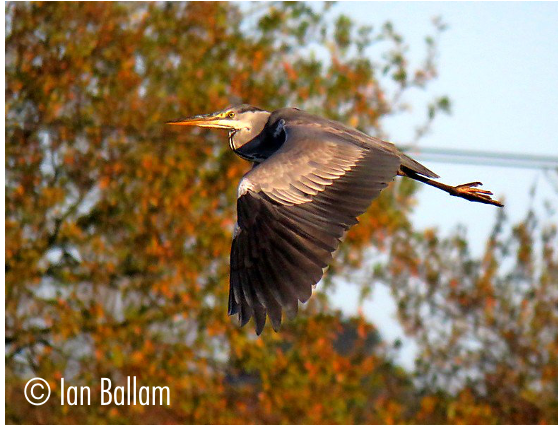
Grey Partridge
Latin Name
Perdix perdix
Status
Former Resident, now Rare Visitor
Site And Records Information
Has been recorded throughout the farmland in the harbour and on Ballard. The final stronghold was Greenland’s Farm in the mid sixties and two were seen here in 1994, also recorded at Arne in 1994. Not many recent sightings, and the final stronghold was Greenland’s Farm in the mid sixties!! A recent flock of 23 at Lytchett Bay in 1999 were deemed escapes as were a small flock in the Frome Valley near Worgret in 2014. There have been no confirmed records in the last ten years at the time of writing (May 2020).
Grey Phalarope
Latin Name
Phalaropus fulicarius
Status
Scarce Visitor (after storms)
Site And Records Information
Usually a storm driven wader into the harbour, mainly in the autumn. There have been a number of records over the last couple of decades, turning up on small pools and even the Poole Park boating lake once or twice. In August 2017 a remarkable occurrence of both a Grey Phalarope and Red-necked Phalarope on the same small pool pleased a good number of birders who travelled to go and see them on Arne Moors.
The following records have occurred since 2000
1 on 15th Oct 2002 at Branksome Chine
1 on 20th Oct 2002 from boat off Shipstal Point
2 on 22nd Nov 2004 at Holes Bay
1 on 3rd Nov 2005 at Branksome Chine
1 on 6th Nov 2005 from RSPB bird boat in Wareham Channel
1 on 14th Nov 2007 at Brownsea Island
1 on 2nd Sep 2008 at Middlebere
2w on 5th Sep 2008 at Branksome Chine
1 on 24th Nov 2008 in Poole Bay
1 on 23rd Nov 2009 in Poole Park
1 on 29th Nov 2011 at Studland
1 on 29th Sep – 9th Oct 2013 at Brownsea Island
1 on 28th Oct 2014 at Studland
1 from 17th-23rd September 2017 on Arne Moors
1 from Sept 22nd -23rd 2018 on the Brownsea Lagoon (G.Armstrong)
1 on 12th Oct 2019 on the Brownsea Lagoon
1 on 27th Oct 2019 at Swineham GPs
1 from 7th-13th Oct 2020 at Lytchett Fields RSPB
1 on 17th Oct 2020 at Swineham GPs was perhaps the Lytchett Fields individual.
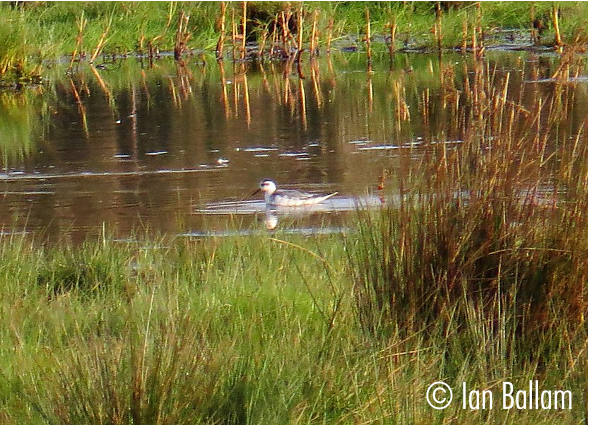
Grey Plover
Latin Name
Pluvialis squatarola
Status
Passage Migrant & Winter Visitor
Site And Records Information
In the past 80% of Dorset’s wintering population used to occur in Poole Harbour and the tremendous regional importance of the roost on the Brownsea Lagoon is shown by the four highest ever Dorset counts, all of which were at this site; 490 in January 1986; 560 in February 1995; 518 in January 1988 and the Harbours maximum count of 599 in February 1999 and 646 in Feb 2001. Nowadays roosts of up to 100-200 occur on the Brownsea Lagoon at high tide, with favoured feeding areas being along the southern and western shores of the harbour such as Brands Bay, Fitzworth and Holton Shore. On passage birds appear in the Middlebere Channel fairly often.
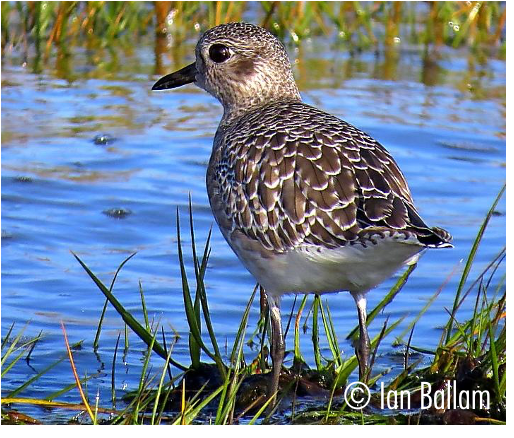
Grey Wagtail
Latin Name
Motacilla cinerea
Status
Resident
Site And Records Information
Used to breed at Lytchett Bay, Keysworth, Corfe Castle, Wareham Quay and Poole Park and probably many other sites. Still numerous breeding pairs and numbers swell ever so slightly in the winter. Very evident as a passage bird in September and October as birds can be heard passing over head most mornings at coastal sites. Over-winters regularly at the PC World Drain and Norden Sewage Works.
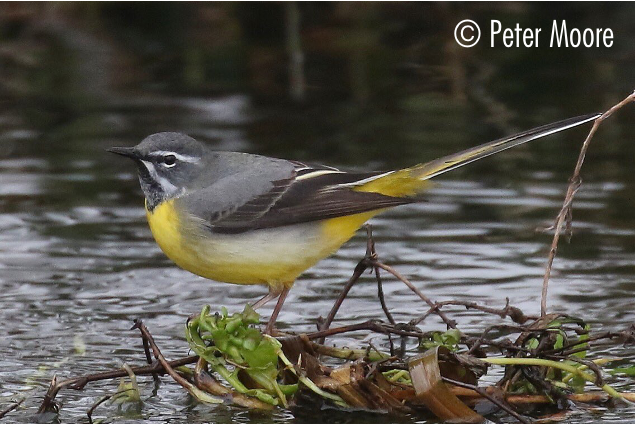
Grey-headed Wagtail
Latin Name
Motacilla flava thunbergi
Status
Vagrant
Site And Records Information
This race of Yellow Wagtail breeds from Scandinavia eastwards to western Siberia and winters in sub-saharan Africa and SE Asia. It is very rare in Dorset with only 7 Dorset records. 1 on 31st May 2014 on top of Old Harry/Ballard, Studland (S.Smith)
Greylag Goose
Latin Name
Anser anser
Status
Feral & Winter Visitor
Site And Records Information
A feral flock of around 15 birds have been on the Frome over the last two decades and have now taken residence in Poole Park where they are very tame and have bred since the first brood of three in 2000. Individuals are recorded around the harbour during the winter at sites like Lytchett Bay, Arne, Swineham and Bestwall and are thought to relate to the Poole Park birds.
In 2003, 4 neck-collared Greylag Geese were found at Middlebere that had originally been trapped in Sweden proving genuinely wild birds also occur. Historic records consist of two on the 2nd October 1949 and 25th February 1955. There were 4 at Arne from the 23rd October to 7th November 1966 and 4 at Studland on 3rd March 1968. Arne saw 30+ on 30th October 1981 and 21 on 26th March 1995. There’s no doubt some of these historic records relate to wild birds.
There is a large feral flock in the Avon Valley and they also create an element of confusion. On 2nd January 2003 48 of these birds were with a feral adult Snow Goose at Bestwall. They were later seen flying north over a Branksome garden as they returned to their home in the Avon Valley.
In 2019 a ringing study began in Poole Park which seeks to ring 300 Greylag Geese in an effort to understand their movements and distribution across the harbour and wider area. To date ringed individulas have been re-sighted at Swineham, Arne Moors, Holmebridge and Longham Lakes. If you see a white ringed Greylag Goose, please report your sightings and the ring number to – pooleparkgreylags@gmail.com
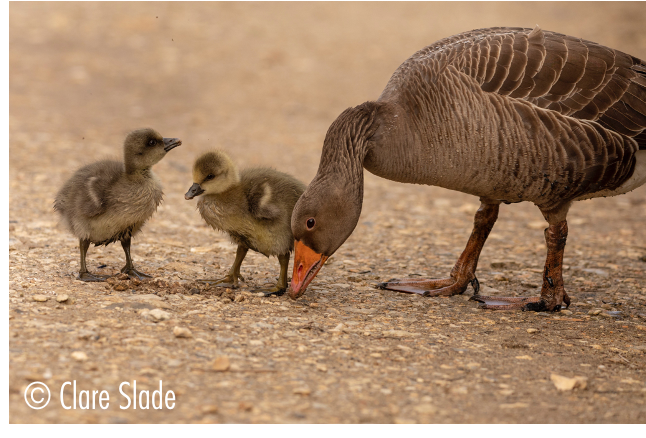
Guillemot
Latin Name
Uria aalge
Status
Passage Migrant & Winter Visitor
Site And Records Information
Small numbers of around 4-6 over winter in and around the bays just outside harbour, usually hanging around the harbour mouth but they do come up as far as Poole Quay sometimes giving great views. A harbour maximum of 36 on 27th May 1988 in Poole Bay. They all pass in good numbers out in Poole Bay during the spring and if watched constantly, its possible many hundreds could be logged during peak migration.
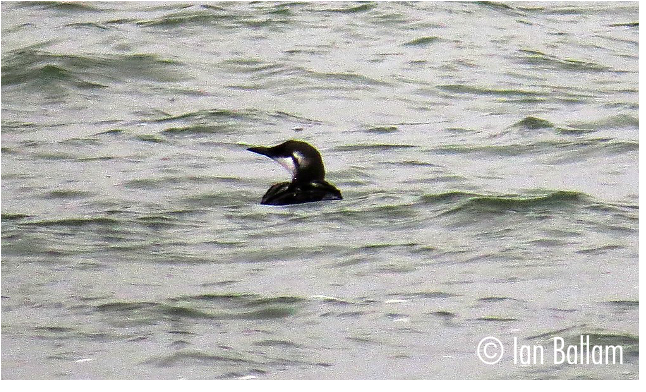
Gyr Falcon
Latin Name
Falco rusticolus
Status
Vagrant
Site And Records Information
Whilst Dorset only has 3 records. All from the 19th century, Devon has had 4 records since 1985 and Cornwall has recorded 8 in the same period. Future records are therefore not impossible.
Poole Harbour has one confirmed record of 1 white Greenland race bird on the 5th Feb 1912 at Ballard Down after a blizzard.
A second was reported but never submitted, seen at Arne on three dates between Oct 25th and November 1st 1976.
This has to be high on many a birders wish list to see on a cold winters day flying over Ballard Down!
Hawfinch
Latin Name
Coccothraustes coccothraustes
Status
Rare Visitor
Site And Records Information
Very rare visitor, best opportunity arising during autumn visible migration at South Haven, Ballard Down and Glebelands. However, In autumn 2017 an unprecedented irruption from southern and eastern Europe saw many thousands arrive into the UK. Sightings began in Poole Harbour at the expected coastal locations, however by November they were regularly being seen at inland sites like Lytchett Fields and Lytchett Minster, Arne, Wareham Churchyard and Holmebridge. They even began appearing in suburban gardens in Upton. It’s unknown exactly how many over-wintered during the 2017/18 winter period but estimates suggest several hundred in Poole Harbour alone and possibly over 1000 across Dorset. There is also remarkably a historic breeding record. On the 8th Sep 1966 a pair was seen in a Poole garden, a week later the female was seen with two young.
1 on 7th Apr 1973 at Studland
1 on 1st Oct 1992 at Rempstone
1 on 2nd Dec 2001 over Corfe Castle
1n on 26th Oct 2005 at South Haven, Studland
1n on 28th Oct 2008 at South Haven, Studland
1 on 11th May 2010 in garden at Norden
1n on 24th Oct 2012 at South Haven, Studland
2n on 6th Nov 2012 at Constitution Hill, Poole
1n on 2nd Oct 2015 at South Haven, Studland
1 on 6th Oct 2015 at Arne car park
1 on 15th Oct 2015 over Arne car park
2017
Ballard Down 4 on 17th Oct, 4 on 30th Oct and 5 on 8th Nov.
Poole 1 in Haymoor Road, Oakdale, on 17th Oct, 2 on 27th Oct and 2 on 9th Nov. 8 sound-recorded over town centre at night between 27th & 30th Oct, max 4 on 28th Oct.
South Haven 1 on 27th Oct.
Arne RSPB Up to 2 between 18th Oct and 21st Nov.
Holes Bay 3 on 15th Oct.
Lytchett Bay Singles on 26th Oct and between 18th Nov and 4th Dec, with 2 on 23rd Nov
Singles at Holes Bay (15th Oct), Middlebere (15th Oct), Sunnyside Farm (12th Nov).
2018
Records were received in the first winter period from Arne RSPB, Corfe Castle, East Holme, Lytchett Bay, Lytchett Matravers, Upton Heath, Wareham.
A maximum count of 14 were logged at Lytchett Matravers church yard in January 2018.
2019
1 over Ballard Down on Oct 6th 2019
2021
1 over Piddle Valley, Carey Secret Garden on Nov 17th 2021
1 on 6th October ‘noc-migged’ over Lytchett Bay 2021
1 on 9th October ‘noc-migged’ over Lytchett Bay 2021
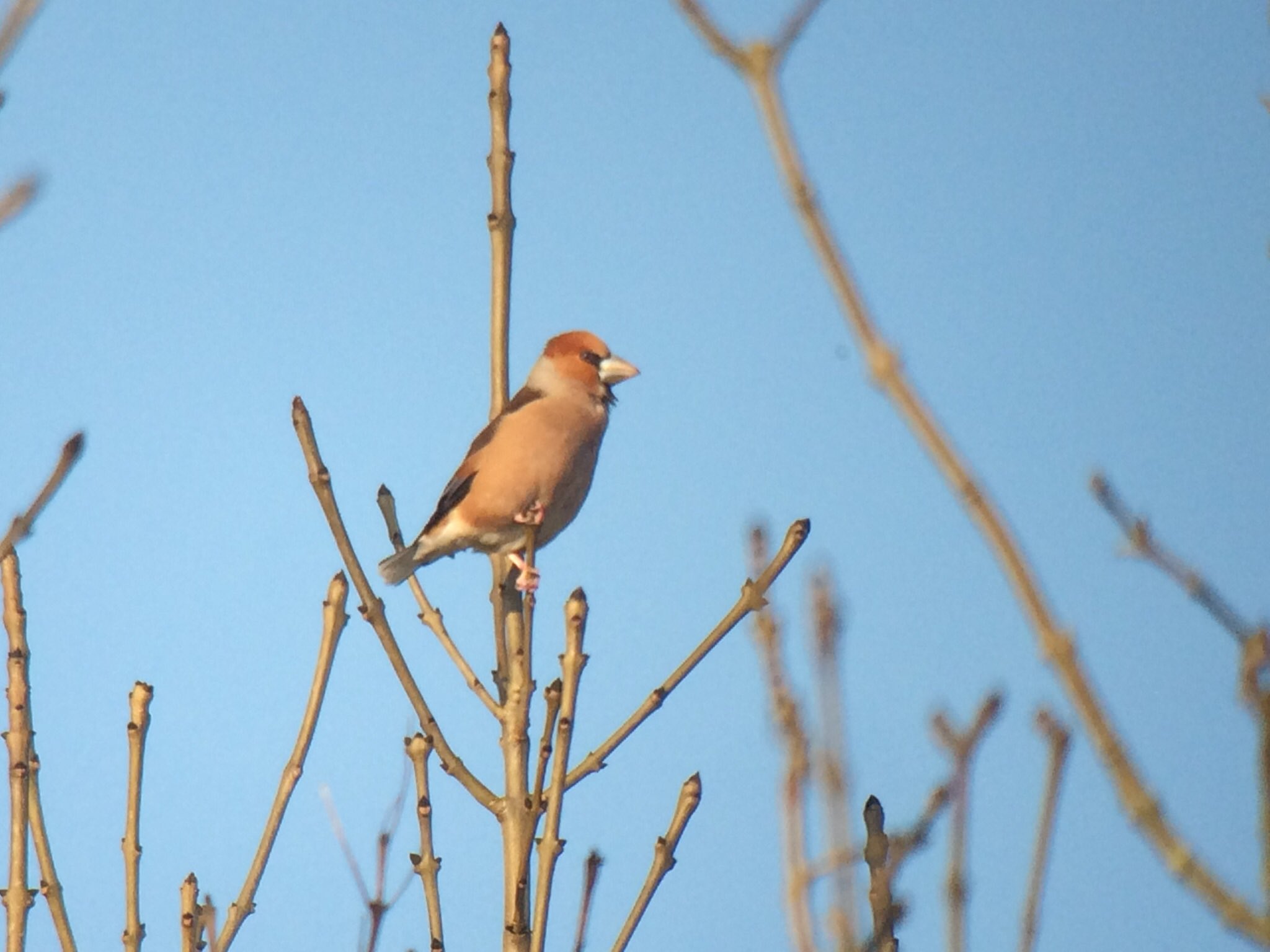
Hen Harrier
Latin Name
Circus cyaneus
Status
Winter Visitor and passage migrant
Site And Records Information
Hen Harrier bred in the harbour in 1875 and possibly in 1922 where Dr K B Rooke wrote in 1948 – “the Hen Harrier winters from the Wareham Channel to Little Sea… fewer records from northern heaths ….where it’s a scarce winter visitor. Probably suffers heavily in these areas at the hands of keepers, farmers and others”
The first roost was found “in tall heather at Arne in 1972 and continued until 1977, when a period of prolonged snow flattened the site causing the area to abandoned.” Tasie Russell.
In a survey conducted by Tasie Russell which included analysis of twenty years of sightings from 1968 -1988, 78% of sightings of Dorset’s Hen Harriers were in Poole harbour where 5% of national wintering birds occurred here with a harbour maximum of 8 in the winter of 1985. During that survey 8 different roost sites were found in the harbour.
Numbers have declined since the late 1980s when individual winter roosts of up to six birds were recorded with a harbour maximum of eight were recorded during one co-ordinated roost count. In more recent years regular surveying rarely shows more than four birds present at any one time although six were briefly in the harbour during February 2014 and 7 were present in Feb 2018.
The use of roost sites has to remain confidential but remains unpredictable with frequent changes in numbers, groupings and locations.
Birds can most reliably be seen by day either from the Middlebere hide, at Arne RSPB or at west harbour locations such as Lytchett Bay and Swineham. Less frequently, they may be seen on Godlingston Heath, around Rempstone and ‘just outside the harbour’ area over the wet bogs of Wareham Forest.
A juvenile male that wintered in 2013-14 had been ringed and originated from Argyllshire. Other local recoveries have involved birds from nests in Cornwall, Lancashire and Aberdeenshire.
A second calendar year male that had remained from the winter cohort was seen to display above Swineham in mid-April 2016 and in August 2018 a fresh juvenile male spent a week around Swineham and Keysworth which is an exceptionally early date and possibly suggesting it fledged somewhere in southern England.
Winter 2022/23 was a good winter with 7 different individuals using the harbour either to hunt, roost, or both!
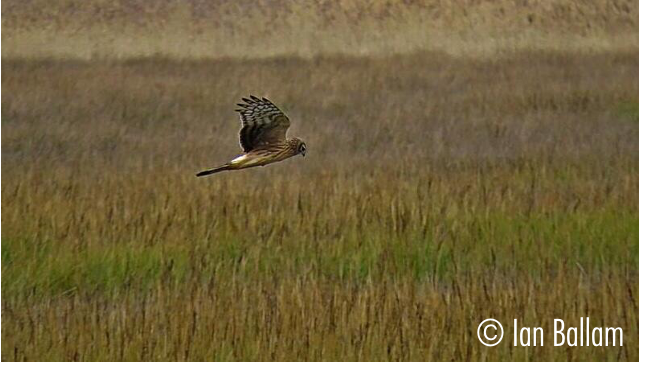
Herring Gull
Latin Name
Larus argentatus
Status
Resident
Site And Records Information
The last 50 years has seen a huge decline in breeding numbers where it was said that Brownsea Island used to host 400-600 nests in the 1960’s, then compare that to only three nests in 1980. In 2016 a breeding gull survey was conducted showing that a population of 811 pairs now breed within our Poole Harbour recording area. Still easy to see in most places around the harbour, with Poole Quay being a good place to look as they hunt down free chips! Despite the breeding problems the non-breeding numbers are still strong with 2000- 3000 in the harbour at peak times. Also recorded in Poole Harbour is the sub-species Scandinavian Herring Gull
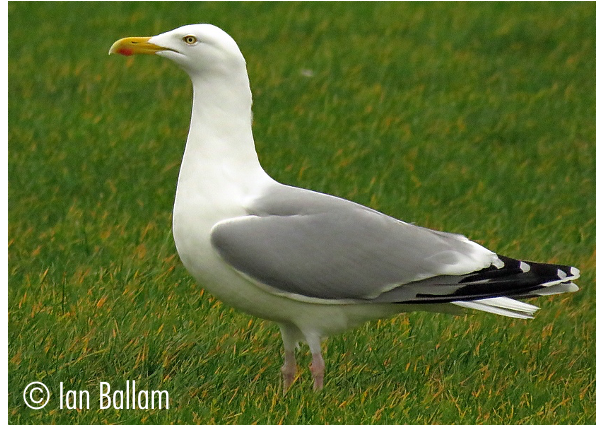
Hobby
Latin Name
Falco subbuteo
Status
Summer Visitor & Passage Migrant
Site And Records Information
In spring Hobby are typically very active and relatively easy to see as they gather over heathland, conifer plantations and bog sites within the harbour after migration from wintering areas in sub-Saharan Africa. Large feeding groups of up to 12 have been recorded on the south side of Wareham Channel during mid-May though smaller groups can appear almost anywhere. The birds that then remain in the area to breed become less conspicuous during the nesting cycle when individuals are best seen around the Arne RSPB heaths, Middlebere, Slepe Heath and Hartland Moor, although fledging success varies according to the availability of large insect prey. During most years there is also a presence to the north of the harbour at both Swineham gravel pits and Lytchett Bay. The wet bog surroundings of nearby Wareham Forest are just outside the harbour boundary but routinely hold hunting birds with nesting within the forest boundaries recorded annually.
The earliest record is 27th March 1994 at Godlingston Heath and the latest is 20th Nov 2010 at Hartland Moor.
Breeding totals for the harbour are estimated to be between 3-6 pairs.
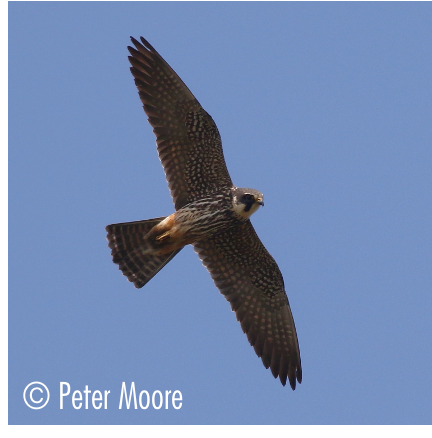
Honey Buzzard
Latin Name
Pernis apivorus
Status
Scarce Passage Migrant
Site And Records Information
Could potentially pass over anywhere on migration. Seems to have become scarcer in recent years. Year 2000 saw a record influx into Britain at the end of September involving at least 500 birds and Dorset enjoyed between 143 and 159 sightings involving a min of 77 individuals. The harbour recorded 5 of these. There was a further influx in 2008 but the harbour missed out completely.
1 on 9th Jun 1967 over Arne (B.Pickess)
1 on 1st Sep 1969 at Salterns Copse, Arne (B.Pickess et al)
1 on 12th Jun 1975 over Shipstal, Arne (B.Pickess et al)
1 on 17th Jul 1980 Holton Heath, disturbed excavating a wasps nest
1 on 25th Apr 1982 over Godlingston, Studland
1 on 10th Sep 1990 at Arne
1 on 15th Sep 1992 at Lytchett Bay (E.S.Brodie)
1 on 1st Jun 1994 at Branksome
1 on 20th Aug 1994 at Canford Cliffs
1 on 20th Jul 1996 at Arne (P.J.Coslett)
1 on 24th May 1997 at Holes Bay (M.Constantine)
1 on 13th May 1999 at Lytchett Bay (S.Robson)
1 on 7th Sep 2000 at Middlebere
1 on 28th Sep 2000 over Arne
1 on 28th Sep 2000 over Branksome (G.Armstrong)
2 on 30th Sep 2000 over Brownsea
1 on 20th July 2002 at Holton Lee and Lytchett Bay (T.Elborn et al)
1 on 21st May 2004 at Holton Lee (R.Howell)
1 on 23rd May 2004 past Brownsea (E.D.Lloyd)
1 on 15th Sept 2004 at Studland (M.Constantine, M.Constantine)
1 on 16th Sep 2006 at South Haven, Studland (M.Constantine, M.Constantine, I.Prophet)
1 on 22nd Aug 2007 at Brands Bay (N.Hopper)
1 from 14th – 15th Aug 2011 at Lytchett Bay (S.Robson et al)
1 on 15th June 2013 over Brownsea Island (P.Morton et al)
1 on 6th May 2016 at Lytchett Bay (S.Robson).
1 on 19th Sep 2017 at Lytchett Fields RSPB (I.Ballam)
1 on 6th May 2020 over Poole Town (C.Slade)
1 noted across various sites in Poole Harbour in August 2020; at Holton Shore and Lytchett Bay on 7th and 8th Aug, Wareham Channel on 20th Aug (seen from BoPH bird boat) and again at Lytchett Bay on 28th Aug.
1 on 11th and 30th June 2021 – Lytchett Bay
1 on 23rd Sept 2021 over the Wytch Causeway
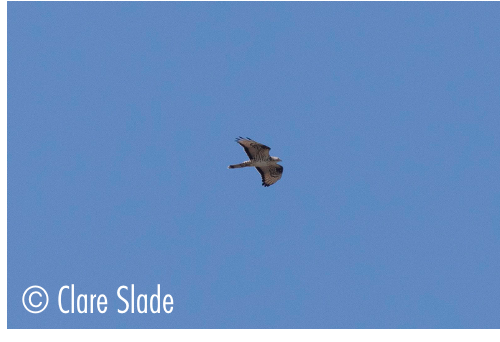
Hooded Crow
Latin Name
Corvus cornix
Status
Vagrant
Site And Records Information
A close relation to our more common Carrion Crow, the Hooded Crow is a rare visitor from the north with only six Poole Harbour records.
1 from 6th Jan to 15th March 1953 at Sandbanks
1 on 29th- 30th April 1967 on Brownsea
1 on 21st March 1980 on Brownsea
1 on 16th Feb 1991 on Brownsea
1 on 26th – 28th August 2017 at Manor Farm and Glebeland Farm Fields, Studland (S.Smith et al)
1 at Studland Village between 6th-28th Jan 2018 in the Manor Farm/Ballard Down area (T.Carley, M.Gould et al)
Hoopoe
Latin Name
Upupa epops
Status
Rare Visitor
Site And Records Information
Scarce visitor to the harbour, almost annual in recent years. Nationally this species is a scarce migrant. Its occurrence is fairly stable with 10 year means varying from 93 (1990’s) to 147 (1960’s). The current decade mean is 124. There are many historical records from various places around the harbour. Below is a complete list since 1980. Spring records are very much the norm, with only 8 of the following records relating to autumn. There is one winter record from 2013 when a bird spent the winter on a housing estate in Hamworthy!
1 from 13th to 14th May 1978 at Arne
1 on 8th May 1980 at Arne
1 on 26th -28th May 1981 at Arne
1 on 13th Nov 1982 at Lilliput/Sandbanks
1 on 23rd Apr 1984 at Studland
1 on 3rd May 1984 at East Holme
1 on 6th Apr 1985 at Parkstone
1 on 10th Apr 1985 at Nine Barrow Down
1 on 5th May 1986 at Knoll Beach, Studland
1 on 15th Apr 1989 at Brownsea
1 on 27th May 1991 at Studland
1 from 8th-11th Apr 1992 at Greenlands Farm, Studland
1 from 20th to 22nd Sep 1992 at Corfe Castle
1 on 24th-25th March 1996 on Middlebere
1 on 29th Apr 1998 at Hartland Moor
1 on 22nd Apr 2000 at Nine Barrow Down
1 on 5th Sep 2002 at Coombe Heath, Arne.
1 on 16th Apr 2003 on the Turlin Shore, Lytchett Bay
1 on 24th Mar 2004 at Ham Common
1 on 25th -29th Mar 2004 at Holton Lee (presumed same as above)
1 on 10th May 2004 at Ham Common
1 on 27th Jun 2006 at Wareham
1 on 3rd Oct 2006 at Canford Heath
1 on 3rd Oct 2006 at Sandbanks (same as above?)
1 on 21st May 2008 at Nine Barrow Down
1 on 24th – 25th May 2008 at Canford Heath
1 on 21st Mar 2011 at Swineham GP
1 on 31st Mar 2011 at Holton Lee
1 on 14th Apr 2011 at Coombe Heath, Arne
1 on 23rd Apr 2011 at Arne (same as above?)
1 on 3rd Nov 2012 on Godlingston Heath, Studland
1 from 23rd Jan- 19th Mar 2013 around Lytchett Bay and Hamworthy
1 on 24th Oct 2013 at “Poole Harbour” (per DBR13 in press)
1 on 24th Apr 2014 at Greenlands Farm, Studland
1 on 5th Jul 2014 at Sandford Lane Ind Est, Wareham
1 on 11th March 2017 at Wytch Causeway (M&M Constantine)
1 on 10th April 2020 at the base of the North West Walls (J.Parker)
1 on 23rd Apr 2020 in a private garden in Branksome.
1 from 22nd Oct – 30th Oct 2021 at Lytchett Bay allotments.
1 from 7th – 9th April 2021 – Ower Bay, Rempstone Heath
1 on 1st May 2021 in Studland Village
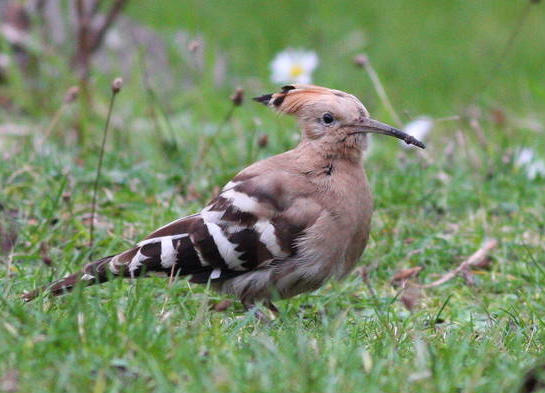
House Martin
Latin Name
Delichon urbicum
Status
Summer Visitor & Passage Migrant
Site And Records Information
Sporadic breeding sites around the harbour with the manor house at Upton CP hosting nests. Passage migrants arrive mid April and pass through feeding over the many moors and fields around the harbour and then start to depart early September and all the way through October. Large counts of up to 1000+ are always possible if watching from a good migration vantage point such as Ballard. In mid-summer feeding colonies can be found over Swineham GP nad Lytchett Fields.
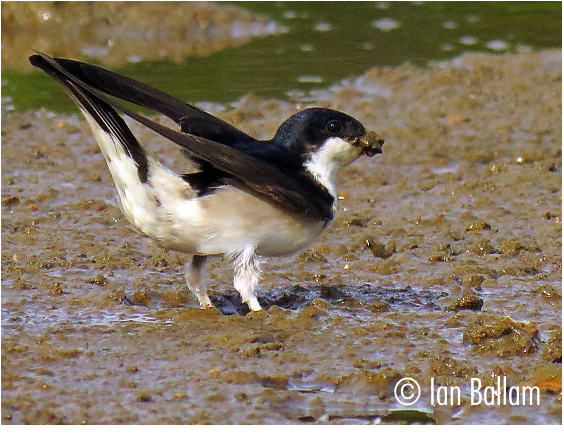
House Sparrow
Latin Name
Passer domesticus
Status
Resident
Site And Records Information
Many breeding colonies in urban and rural areas around the harbour, but declines are evident in various places such as Brownsea and Ham Common. Can occur as a passage migrant in September and October with Ballard Down and South Haven logging passing birds on migration.
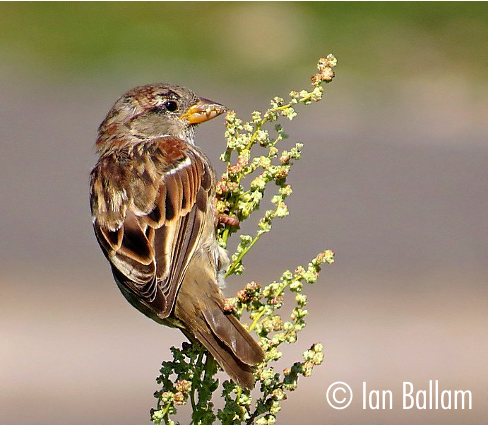
Iceland Gull
Latin Name
Larus glaucoides
Status
Scarce Winter Visitor
Site And Records Information
Very rare winter visitor. Most Dorset records occur between Feb and May. In 1984 there were 22 Dorset records and in 1998 and 2000 there were at least 15. Having become almost annual in the 1990’s and after 4 in 2000, there have been only 8 birds in the harbour in the last 15 years!
1 in 1893 in “Poole Harbour” was the first record for Dorset (GPG2004)
1 on 1st May 1970 on Brownsea Lagoon
Ad from 18th May – 6th Jun 1981 at Brownsea Lagoon
1stW from 8th -10th Feb 1984 at Canford Heath tip.
1s W on 23rd Feb and 31st Mar 1984 at Brownsea (presumed same as above)
2ndW on 19th Feb and 31st Mar 1984 at Little Sea, Studland
2ndW on 6th Mar 1988 in Redhorn Bay, Studland
Imm on 9th Feb 1991 in Holes Bay
Imm on 14th and 20th Feb in Poole Park (presumed same as above)
2ndW on 10th Mar at Studland
Ad on 8th Feb 1992 at Shell Bay
Ad on 14th Feb 1993 at Holes Bay
Imm on 30th Apr 1995 in Poole Bay
1stW on 23rd Mar 1996 in Poole Park
1stW on 15th Mar 1997 in Lytchett Bay
1stW on 7th Mar 1998 in Lytchett Bay
1stW on 15th Mar 1998 in Holes Bay (presumed same as above)
1stW on 16th Apr 1998 at Poole Quay
1stS on 17th Jun 1999 at Kerry Foods, Holes Bay
1stW on 1st Jan 2000 at Swineham Point
1stW on 4th and 29th Jan 2000 on Brownsea Lagoon
1stW on 6th Jan 2000 at Sandbanks (presumed same as above)
1stW on 20th Jan 2000 at Corfe Mullen Tip
1stW on 20th and 22nd Jan 2000 at Hatch Pond (presumed same as above)
1stW on 29th Jan 2000 at Poole Park (presumed same as above)
1stS on 28th – 29th May 2000 on Brownsea lagoon
Imm on 16th Mar 2001 over Hatch Pond
2 (1stW and 1stS) between 5th – 23rd Mar 2002 at Corfe Mullen Tip and Lytchett Bay
Imm on 16th Jan 2005 at Bestwall, Wareham
Juv from 16th -29th Mar 2008 at Lytchett Bay
Juv on 24th Apr 2008 at Sandbanks
Juv on 6th – 8th Mar 2009 at Holes Bay
Juv on 2nd March at Holes Bay
Juv on 3rd – 4th Mar 2014 at Poole Park
2CY on 21st Feb 2016 at Brownsea Island
2CY on 11th Apr 2016 at Upton CP (R.Webb et al.)
Kumliens Gull Larus glaucoides kumlieni
This darker winged race of Iceland Gull breeds from SW Baffin Island to NW Quebec has only occurred in Dorset on 2 occasions (2 more recent records pending). There is one record from the harbour, this record was the first to have been seen alive in the County.
2CY on 11th Apr 2001 at Corfe Mullen Tip (J.Lidster et al.)
Icterine Warbler
Latin Name
Hippolais icterina
Status
Vagrant
Site And Records Information
This species is a declining rare migrant to Dorset. In the peak years of the 80’s and 90’s 10 – 12 might be seen in the County in a year. However it has become much rarer since the turn of century with 6 blank years already. 80% of the county’s records are on Portland. The bird is truly rare in the harbour. There have been 6 records.
1 on 9th Sep 1962 on Studland Heath
1 on 1st Aug 1977 at Little Sea
1 on 31st Aug – 1st Sep 1979 on Brownsea
1 on 2nd Sep 1997 at Ballard Down (J.Lidster et al)
1 on 5th – 6th Sep 1997 at Ballard Down (C.Conroy et al)
1 on 12th Aug 2003 at Greenlands Farm, Studland (I.Prophet et al)
Jack Snipe
Latin Name
Lymnocryptes minimus
Status
Scarce Winter Visitor
Site And Records Information
This species is rarely seen sitting in the open. Observers experience is more likely to involve flushing birds from under your feet during the winter months whilst you’re looking up at the skies. They are undoubtedly under recorded and sometimes Snipe are misidentified in their place. A fairly good ID feature when accidentally flushing Snipe/Jack Snipe is that when you flush a Jack Snipe it quite often only fly’s a few meters and drops back down into the vegetation, whereas Common Snipe will often rise and tower far out of sight. Common Snipe typically flush well ahead you whilst ‘Jacks’ will wait until you almost stand on them.
Sunnyside Farm, Wareham Water Meadows, Lytchett Bay, Swineham and Arne all have regular reports each winter. Ringing at Sunnyside Farm on 2 nights in autumn 2010 produced 12 different birds. Winter site fidelity has also been proven. A bird ringed at Sunnyside on 13th March 2010 was recaptured there the following winter on 6th November. It was also discovered in Jan 2017 Jack Snipe also feed out on the urban playing fields of Baiter during the night.
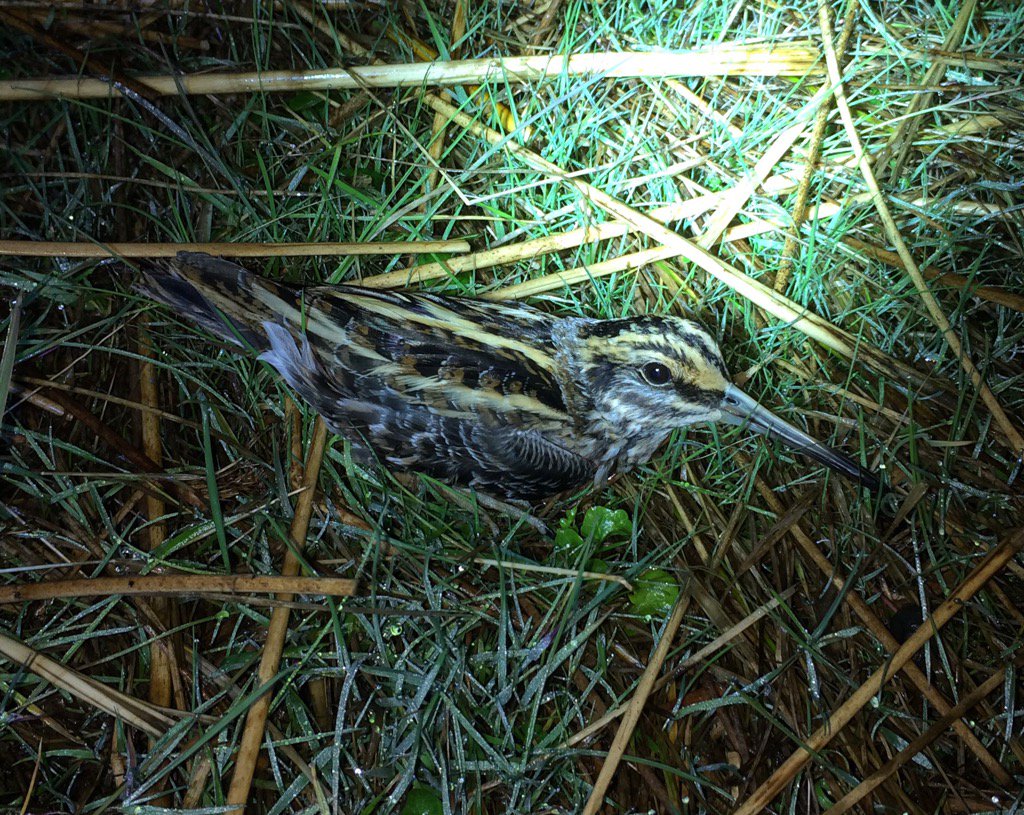
Jackdaw
Latin Name
Corvus monedula
Status
Resident
Site And Records Information
Breeds right across the harbour with birds now nesting in urban chimneys therefore becoming a common garden bird. Large winter roosts of 1000+ birds can occur in the Arne, Studland area with autumn migration evident in October/November across the harbour.
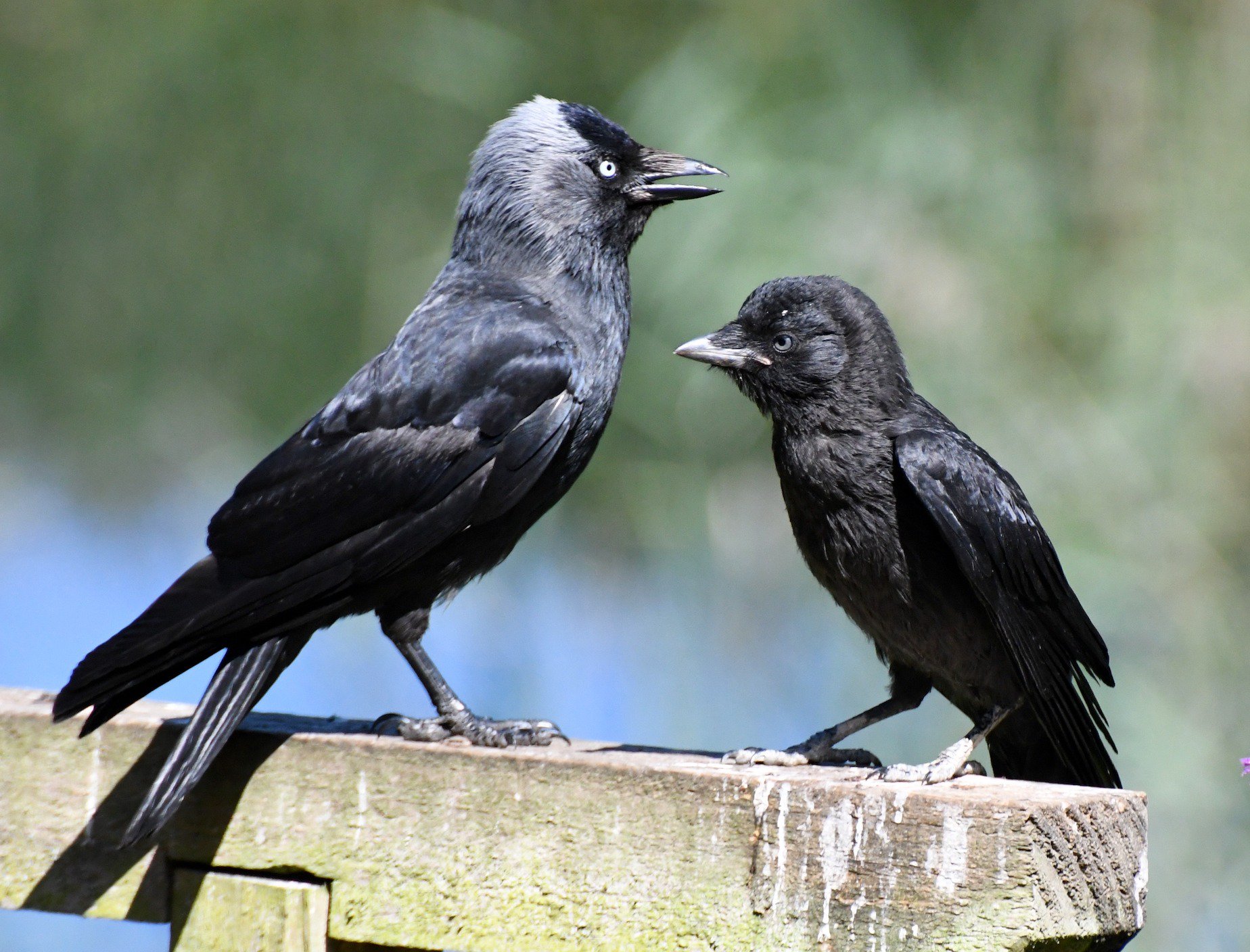
Jay
Latin Name
Garrulus glandarius
Status
Resident
Site And Records Information
Breeds in suitable areas, including urban sites around the harbour. Very vocal in autumn and can be seen at Lytchett Bay, Poole Park, Arne, Studland, Holton Lee, Upton CP and Canford Heath. Occasionally autumn irruptions can occur with birds being displaced from the continent due to lack of food. The autumn of 2012 saw good numbers passing through the harbour at many sites with counts of up to 20+ birds at a time.
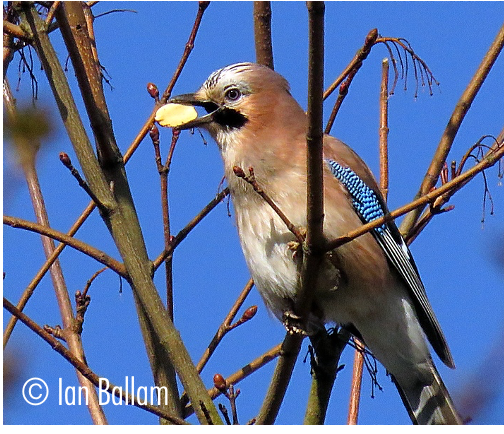
Kentish Plover
Latin Name
Charadrius alexandrinus
Status
Vagrant
Site And Records Information
This species is declining significantly in terms of its national status. 1993 produced 59 records (the best year since collation of records began in 1986) and 2013 produced only 8 (the worst year). Dorset remains one of the best counties with Ferrybridge, Weymouth being the preferred site. There have only been 9 records in the Poole Harbour.
1 on 24th – 27th Apr 1925 at Shell Bay beach
1 on 27th Apr 1934 at Shell Bay beach
1 on 24th Oct 1950 at Shell Bay beach
1 on 9th Apr 1953 at Shell Bay beach
1 on 22nd – 25th Aug 1977 at Brownsea Lagoon
1 on 14th May 1983 on Shipstal beach, Arne
1 on 20th April 1988 at Arne
1 from 27th Nov – 15th Dec 1991 at Studland (R Price et al)
1 on 1st Sep 2015 on Brownsea Lagoon (G.Armstrong et al)
Call 01202 641 003
© 2024 Birds of Poole Harbour Registered Charity No. 1152615

